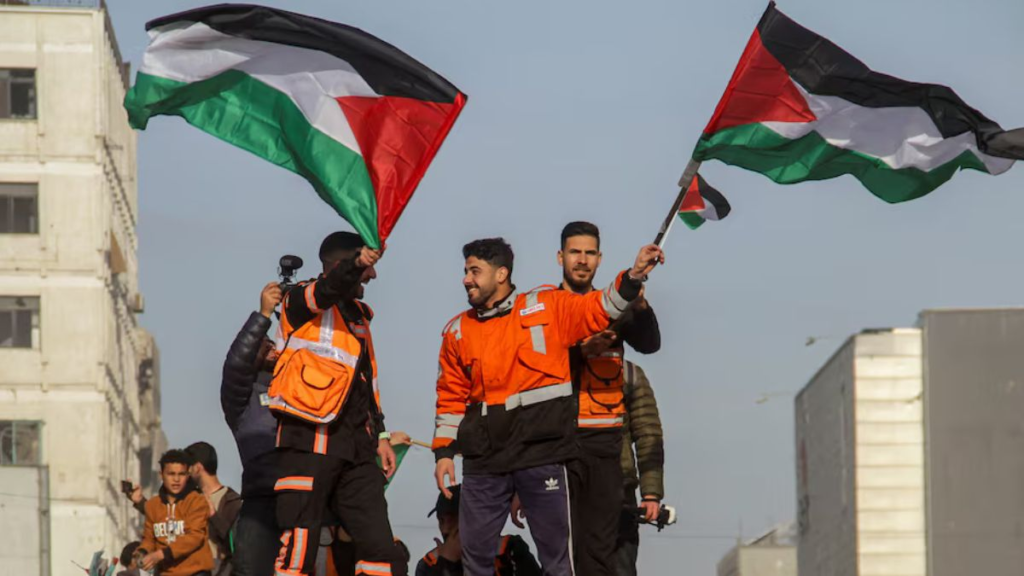
Ceasefire in Gaza: A ceasefire between Israel and Hamas has officially commenced, offering a temporary reprieve after weeks of intense conflict in Gaza. Brokered through international mediation, this agreement aims to halt the violence and facilitate humanitarian aid to the region. However, it raises pressing questions about whether this marks the end of the war or merely a brief pause in a protracted cycle of hostilities.
Ceasefire Agreement
The ceasefire progresses through three clearly delineated stages: each stage carries within it problems and opportunities.
Stage One: Initial Confidence-Building Measures
The first six weeks of the truce would address urgent humanitarian and diplomatic objectives. Hamas will release 33 hostages while Israel agrees to pull its troops from Gaza’s crowded districts. As a bargaining chip, Israel would release some 1,000 Palestinian prisoners who include 190 inmates who have long been behind bars. The Palestinian will be able to go back home, which Hamas would monitor. Further stages would be negotiated upon the 16th day as long as the truce stands.
הצהרה מיוחדת ממני אליכם >> pic.twitter.com/8CU2TOeOYn
— Benjamin Netanyahu – בנימין נתניהו (@netanyahu) January 18, 2025
Stage Two: Towards a Permanent Settlement
The second stage is towards a more permanent peace. Remaining hostages are to be released, and Israel is to release more Palestinian prisoners. However, political and security complexities make this stage precarious because mutual distrust and potential spoilers on both sides threaten progress.
Stage Three: Reconstruction and Reconciliation
The rebuilding phase focuses on rebuilding Gaza’s infrastructure and providing redress to the humanitarian cost of the war. It may involve bringing back the bodies of the last remaining hostages and international assistance in rebuilding, an exercise that will likely be long-winding and emotive.
Challenges to Permanent Peace

The ceasefire is a crucial opportunity for both parties, but it does not address the root causes of the conflict. Israeli Prime Minister Benjamin Netanyahu has threatened to resume military action if the agreement’s second phase fails. In addition, internal divisions within the Israeli government have complicated matters, with National Security Minister Itamar Ben-Gvir resigning in protest but other coalition members continuing to offer conditional support.
Hamas, for its part, has made concessions, giving up its demand that Israel withdraw fully from Gaza. However, provisions of the deal—such as the possibility of Israel maintaining a buffer zone along the Gaza-Israel border—risk stoking the fires of protest, especially among Palestinians who regard any such steps as de facto annexation.
The Way Forward
While the truce gives civilians much-needed breathing space, it is precarious and susceptible to collapse. There is a good chance that it will be scuttled by hardliners on both sides and the elongated timeline to implement key provisions.
In effect, the truce is more of a pause than a stoppage of the conflict. Sustainable peace will have to be brought about by resolution of deep-rooted issues like Gaza’s blockade, regional security concerns, and long-standing political grievances.
The truce, for now, provides a ray of hope amidst the destruction. However, the success of the truce would depend on sustained dialogue, mutual concessions, and the will to prioritize humanity over hostility.
